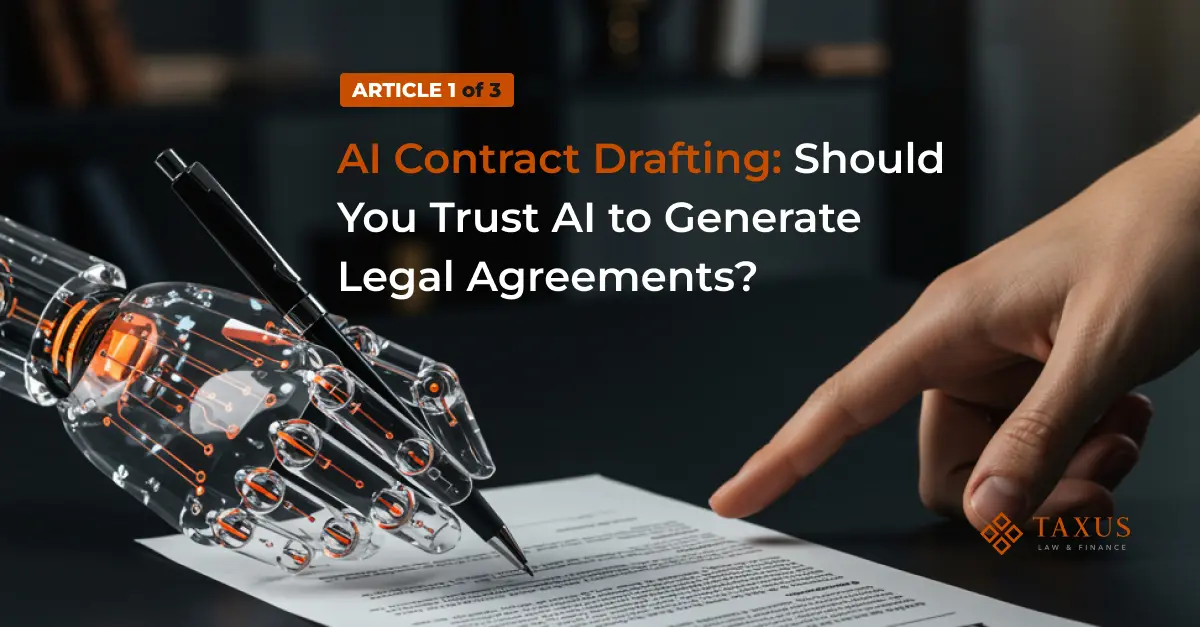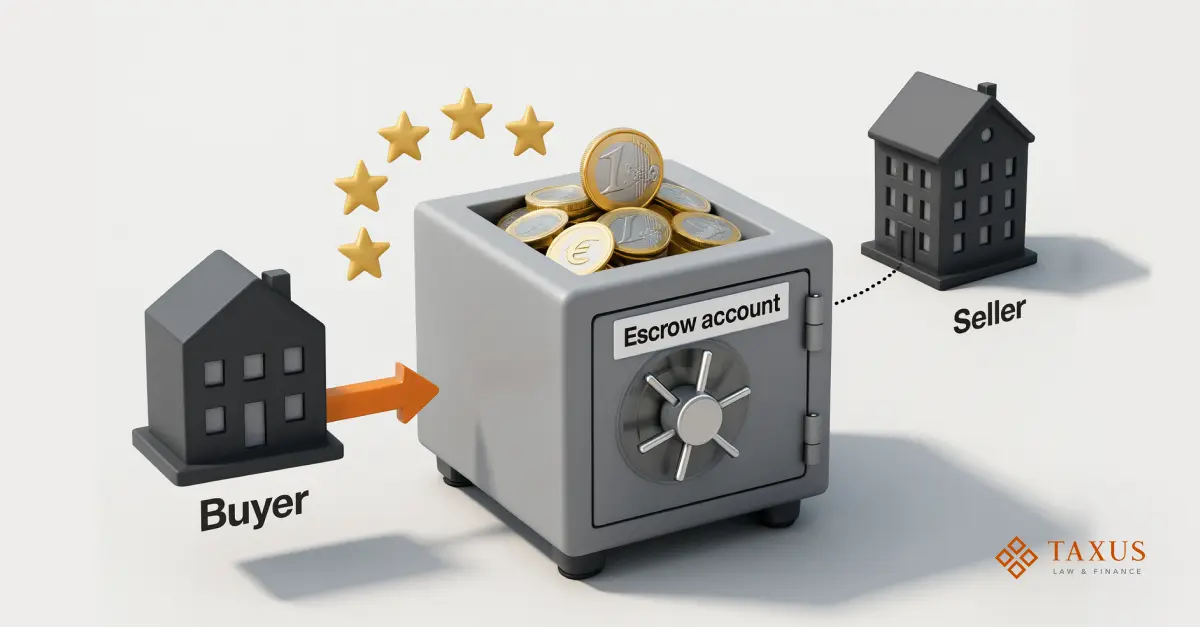AI Contract Drafting: Should You Trust AI to Generate Legal Agreements?


In today’s fast-moving digital world, artificial intelligence (AI) is reshaping how we work, communicate, and make decisions. From composing emails to generating marketing content, AI-powered tools have become essential companions for entrepreneurs, freelancers, and businesses seeking to increase efficiency, reduce costs, and save time. Unsurprisingly, this wave of innovation has reached the legal field, particularly in the area of contract drafting using AI.
This is the first article in our series on AI and contracts. Here we explain what AI contract drafting is, when it is appropriate – or not advisable – to use it, and how AI works in review and CLM (the contract lifecycle): where it truly helps and where a lawyer is indispensable. Next in the series: (2) a tools overview – ChatGPT, Harvey, Spellbook, LawGeex (pros/cons, use cases); (3) ethics, risks, and best practices for safely integrating AI into legal workflows. The goal of the series is not to “replace” a lawyer with AI, but to show how to combine technological speed with legal accountability.
But what exactly is AI contract drafting?
AI for legal contract drafting refers to the use of artificial intelligence tools, such as ChatGPT, Harvey, Spellbook, LawGeex, and other AI contract drafting software, to assist in creating legal documents. These AI tools for contract drafting can help generate templates, adapt clauses to user input, and even identify potential inconsistencies in agreements. From service contracts and NDAs to employment and partnership agreements, AI-based contract drafting has become an indispensable assistant to professionals in routine tasks.
At first glance, these generative AI contract drafting tools seem like a dream for busy professionals – efficient, affordable, and fast. But legal contracts aren’t just text. They are enforceable documents that define obligations, allocate risks, and safeguard your rights. And here lies the dilemma: can you really trust AI contract drafting tools to get it right when the stakes are high?
While AI contract drafting tools can increase speed and reduce manual effort, they cannot replace legal judgment, professional liability, or the human understanding of nuance and context. In this article, we explore the growing role of AI in contract drafting, its strengths, its limitations, how to use it responsibly, and also determine which is the best AI for contract drafting.
The goal is not to fear AI but to understand how and when to use it wisely.
Can You Use AI to Draft a Contract?
The short answer is: Yes, you can use AI to draft a contract – even for free.
There is no law in jurisdictions that prohibits individuals or businesses from using AI for contract drafting purposes. Free AI contract drafting software like ChatGPT and other tools are widely accessible. Current regulations in many countries focus on how AI is developed and used, especially in terms of data privacy, algorithmic transparency, and ethical considerations, but they do not restrict end users from employing AI in drafting documents for personal or commercial use.
However, just because you can doesn’t always mean you should.
Here’s the core issue: AI is not a lawyer.
5 things AI cannot do in legal work
AI cannot provide legal advice, interpret laws, or assess risks in the way a qualified legal professional can. When you use an AI tool like ChatGPT or a contract generator, it draws from a vast pool of data – public sources, training materials, and patterns – to generate an answer it predicts to be relevant. But it doesn’t know whether the information is accurate or legally enforceable in your jurisdiction.
AI-generated contracts may appear well-structured and legally sound, but appearances can be deceiving. These tools are only as reliable as the input you provide and the context they are trained on. If you don’t fully understand what information is important, or if you overlook critical legal or business-specific requirements, the resulting document may be incomplete, ambiguous, or non-compliant with applicable laws.
Unlike a lawyer, AI cannot:
- Ask clarifying questions and uncover hidden risks.
A model won’t figure out what you didn’t say; it won’t elicit nuances of your process, IP, data, benchmarks, or regulatory specifics—the very things that often break a contract in practice. - Adapt to legal changes and jurisdiction-specific requirements.
AI does not maintain a reliable, up-to-date picture of statute updates, case law, or local formalities (signature formats, consumer protection, employment norms, etc.). - Balance commercial goals and legal risk (strategy).
It won’t model trade-offs in liability, SLAs, warranties, or IP licensing, and it won’t tie the wording to your revenue model or the stage of negotiations. - Bear professional responsibility for errors.
AI has no duty of care, malpractice insurance, or accountability. If something goes wrong, the responsibility rests with you. - Conduct negotiations and reach balanced compromises.
AI doesn’t read between the lines, sense the parties’ positions, bargain over wording, or craft concessions that preserve your target deal economics.
A contract that isn’t customized to your needs or vetted by a lawyer may lead to costly disputes, regulatory issues, or unenforceable obligations.
Consult a lawyer before relying on an AI-generated template.
Can AI analyse and review contracts?
AI contract drafting tools excel at processing large volumes of text quickly, making them a valuable assistant for certain aspects of contract analysis. For instance, AI can scan contracts to identify key clauses, such as payment terms, termination conditions, or confidentiality obligations, and summarize them for quick reference. In Contract Lifecycle Management (CLM), AI-powered tools can automate repetitive tasks like extracting metadata (e.g., contract dates, parties, or renewal terms), tracking deadlines, or organizing contracts in a centralized database. These capabilities make AI contract drafting software a powerful tool for streamlining initial reviews and managing contract workflows, particularly for businesses handling high volumes of agreements.
Limitations of AI in the legal context
However, AI’s analytical abilities are not foolproof. Even the best AI for contract drafting has major limitations. Its effectiveness depends heavily on the quality of its training data and the specificity of the instructions provided. For instance, while AI can flag a missing clause, it may not recognize whether that clause is critical in the context of a specific industry or jurisdiction. Similarly, in CLM, AI can automate renewals or send alerts for deadlines, but it cannot strategize about whether renewing a contract aligns with a company’s long-term goals. When analysing correspondence, AI might misinterpret the tone or intent of negotiations, missing subtle cues that a lawyer would catch.
Risks of relying solely on AI
The risks of relying on AI for contract analysis mirror those in contract drafting: it can produce incomplete or misleading results, especially when handling complex legal tasks. AI’s inability to fully grasp legal context means it may misidentify risks or overlook critical issues. A lawyer, by contrast, would evaluate the contract holistically, considering the client’s business model, industry norms, and potential future disputes. Similarly, when reviewing correspondence, AI might extract key phrases but miss implied obligations or strategic concessions that a lawyer would recognize as legally significant.

Don’t trust your business’s safety to AI
Specific CLM challenges
In CLM, AI’s limitations become even more apparent. While it can automate tasks like tracking contract milestones or generating reports, it cannot strategize about contract negotiations, anticipate regulatory changes, or assess whether a contract aligns with a company’s broader objectives. For example, AI might flag a contract for renewal based on its expiration date, but cannot advise whether renewing is in the company’s best interest, given market conditions or competitive pressures. Moreover, AI’s outputs are only as good as the data it’s given. If a contract database contains errors or outdated templates, AI will propagate those flaws, potentially leading to systemic issues across the CLM process. AI’s inability to keep up with the dynamic nature of legal changes, where new laws and amendments emerge frequently, further undermines its reliability.
Human oversight remains essential
These gaps reinforce the argument that AI, while helpful for automation, cannot replace the strategic insight and accountability of a human lawyer. AI can undoubtedly enhance contract analysis and CLM by automating repetitive tasks, summarizing key terms, and flagging potential issues. However, its limitations, reliance on input quality, inability to fully grasp legal context, and lack of strategic foresight make it an unreliable substitute for a lawyer. To leverage AI effectively, businesses should treat it as a supportive tool within a lawyer-led process, ensuring that all AI-generated outputs are thoroughly reviewed by legal professionals to guarantee accuracy, compliance, and strategic alignment.
If you need professional contract drafting or proper adaptation of an AI template to your specific case and jurisdiction, involve a lawyer.
Next — Part 2: Tools for legal drafting: ChatGPT, Harvey, Spellbook, LawGeex — what to choose and when? We’ll compare capabilities, limitations, and typical implementation scenarios for teams of different sizes.
→ Read Part 2: https://taxus.tech/blog/contract/best-ai-tools-for-legal-drafting/

Looking for a reliable payment processing system?
Order selection of a payment solution.









